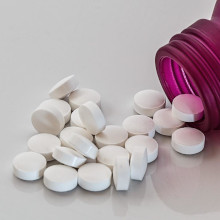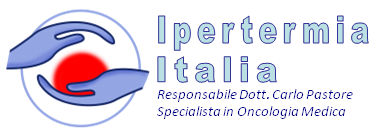Ipertermia linfociti ed interferone
Sinergia tra Ipertermia linfociti ed interferone
 Un interessantissimo studio condotto dal Dipartimento di Immunologia del Roswell Park Cancer Institute (Buffalo, New York, USA) ha evidenziato come l'impiego di ipertermia incrementi l'attività dei linfociti T citotossici (CD8+) e la produzione di interferone gamma.
Un interessantissimo studio condotto dal Dipartimento di Immunologia del Roswell Park Cancer Institute (Buffalo, New York, USA) ha evidenziato come l'impiego di ipertermia incrementi l'attività dei linfociti T citotossici (CD8+) e la produzione di interferone gamma.
Il tutto esita in un miglioramento dell'attività immunitaria, utile nella lotta al cancro. Il lavoro è stato pubblicato sulla rivista medica internazionale International Journal of Hyperthermia.
Dr. Carlo Pastore
Int J Hyperthermia. 2012;28(1):9-18.
Effector CD8(+ )T cell IFN-? production and cytotoxicity are enhanced by mild hyperthermia.
Mace TA, Zhong L, Kokolus KM, Repasky EA.
Source
Department of Immunology, Roswell Park Cancer Institute , Buffalo, New York , US
Abstract
Purpose: Clinical trials combining hyperthermia with radiation and/or chemotherapy for cancer treatment have resulted in improved overall survival and control of local recurrences. The contribution of thermally enhanced anti-immune function in these effects is of considerable interest, but not understood; studies on the fundamental effects of elevated temperature on immune effector cells are needed. The goal of this study is to investigate the potential of mild hyperthermia to impact tumour antigen-specific (Ag) effector CD8(+) T cell functions. Method: Pmel-1 Ag-specific CD8(+) T cells were exposed to mild hyperthermia and tested for changes in IFN-? production and cytotoxicity. Additionally, overall plasma membrane organisation and the phosphorylation of signalling proteins were also investigated following heat treatment. Results: Exposing effector Pmel-1-specific CD8(+) T cells to mild hyperthermia (39.5°C) resulted in significantly enhanced Ag-specific IFN-? production and tumour target cell killing compared to that seen using lower temperatures (33° and 37°C). Further, inhibition of protein synthesis during hyperthermia did not reduce subsequent Ag-induced IFN-? production by CD8(+) T cells. Correlated with these effects, we observed a distinct clustering of GM1(+) lipid microdomains at the plasma membrane and enhanced phosphorylation of LAT and PKC? which may be related to an observed enhancement of Ag-specific effector CD8(+) T cell IFN-? gene transcription following mild hyperthermia. However, mitogen-mediated production of IFN-?, which bypasses T cell receptor activation with antigen, was not enhanced. Conclusions: Antigen-dependent effector T cell activity is enhanced following mild hyperthermia. These effects could potentially occur in patients being treated with thermal therapies. These data also provide support for the use of thermal therapy as an adjuvant for immunotherapies to improve CD8(+) effector cell function.

 RSS
RSS 





